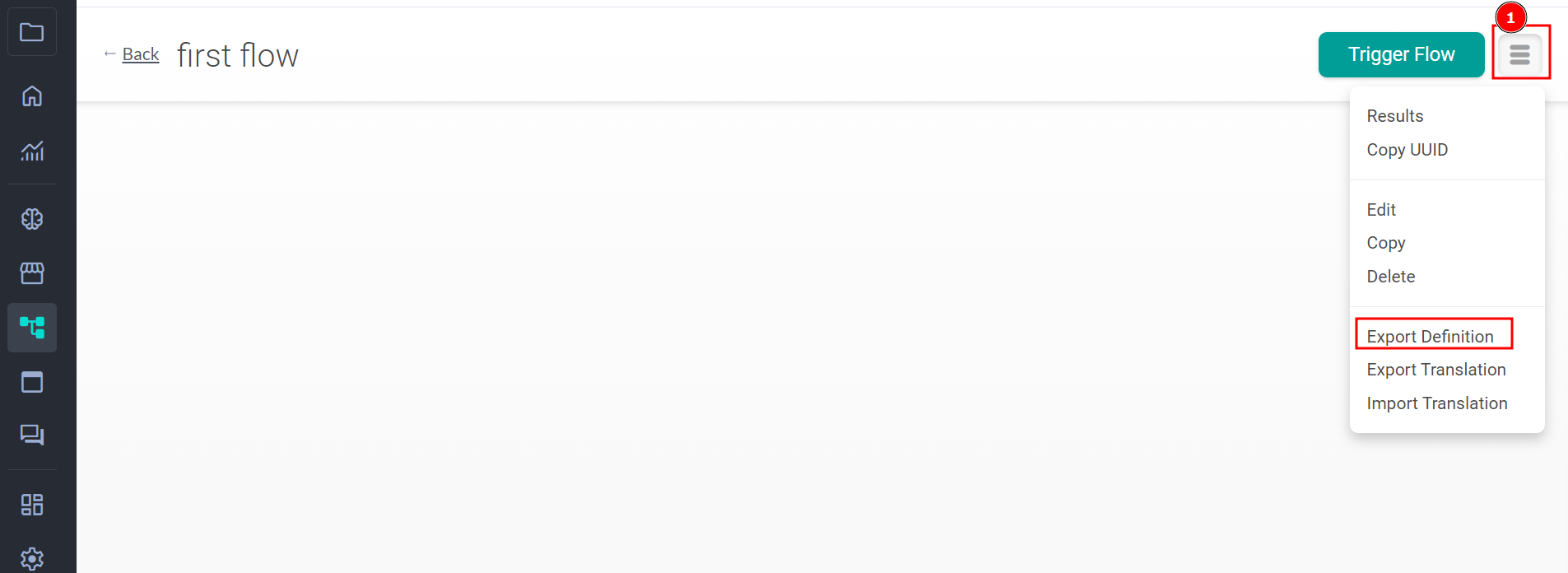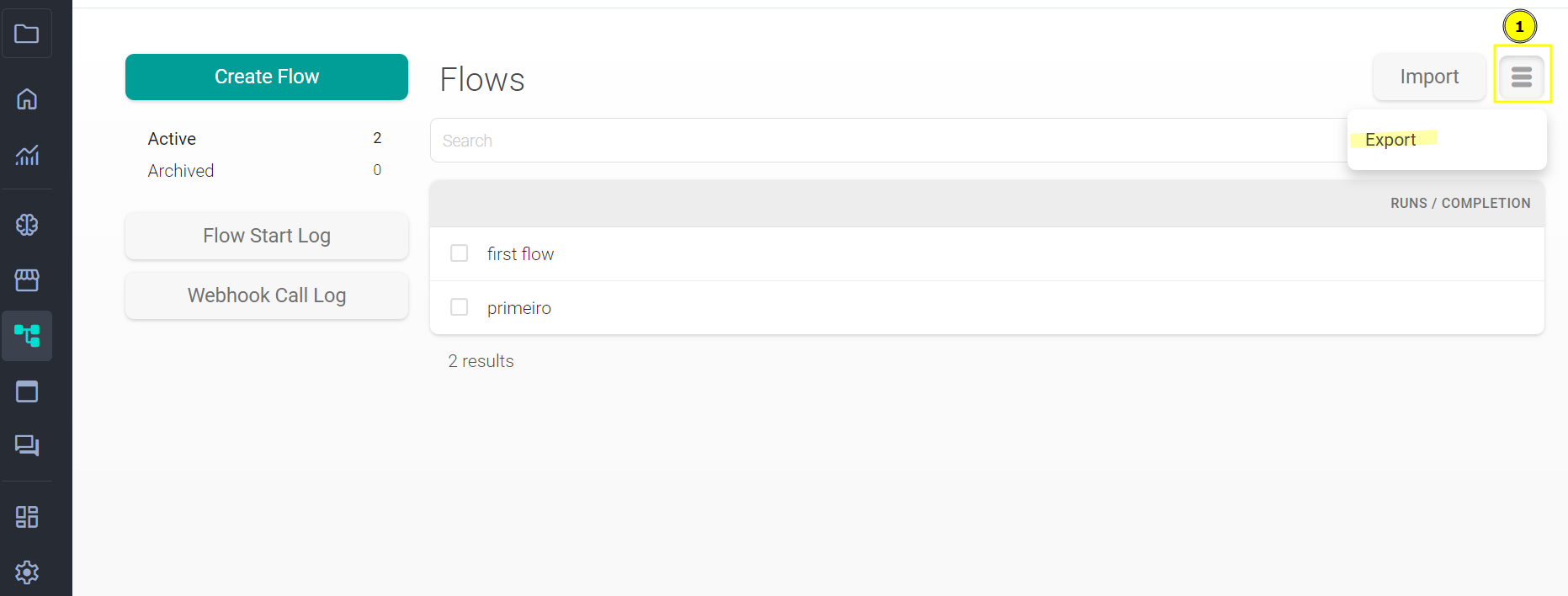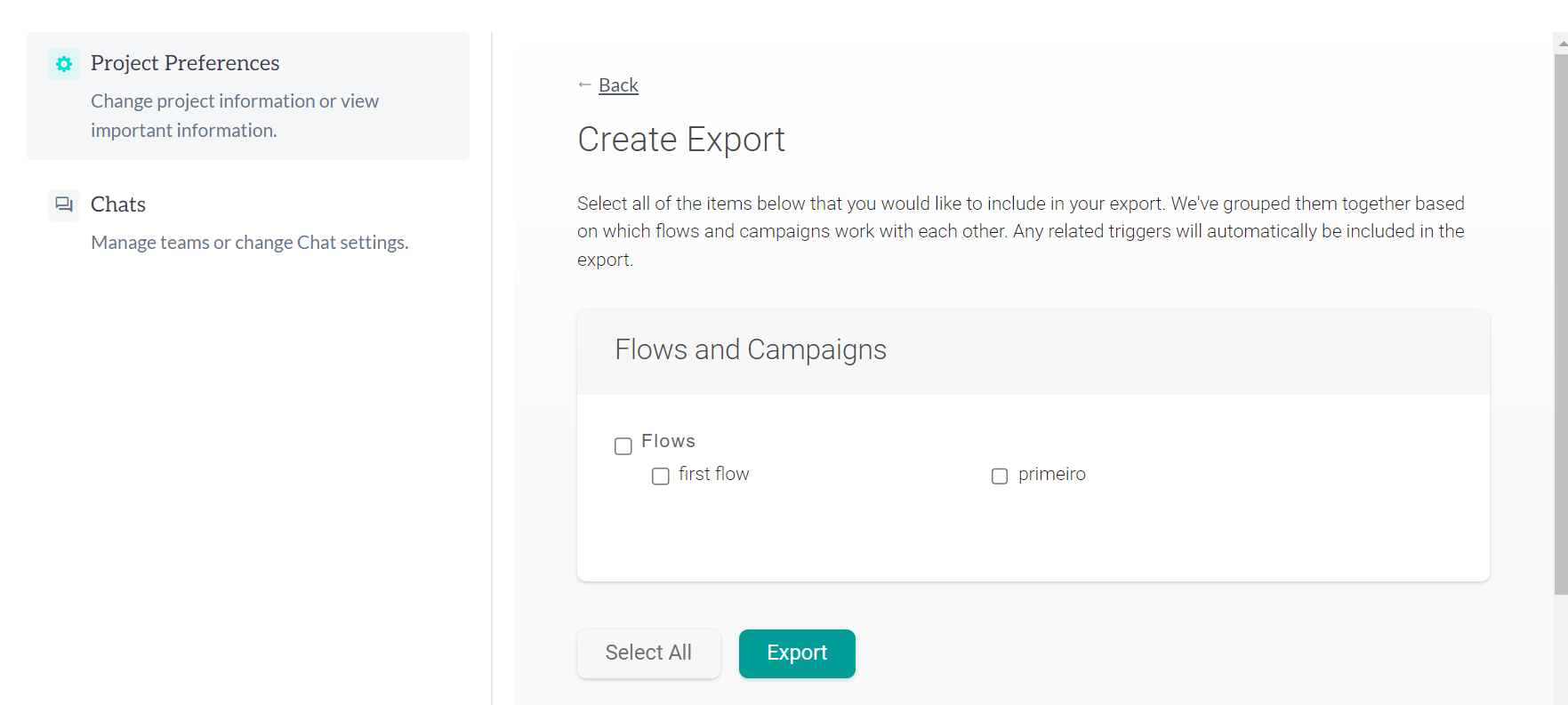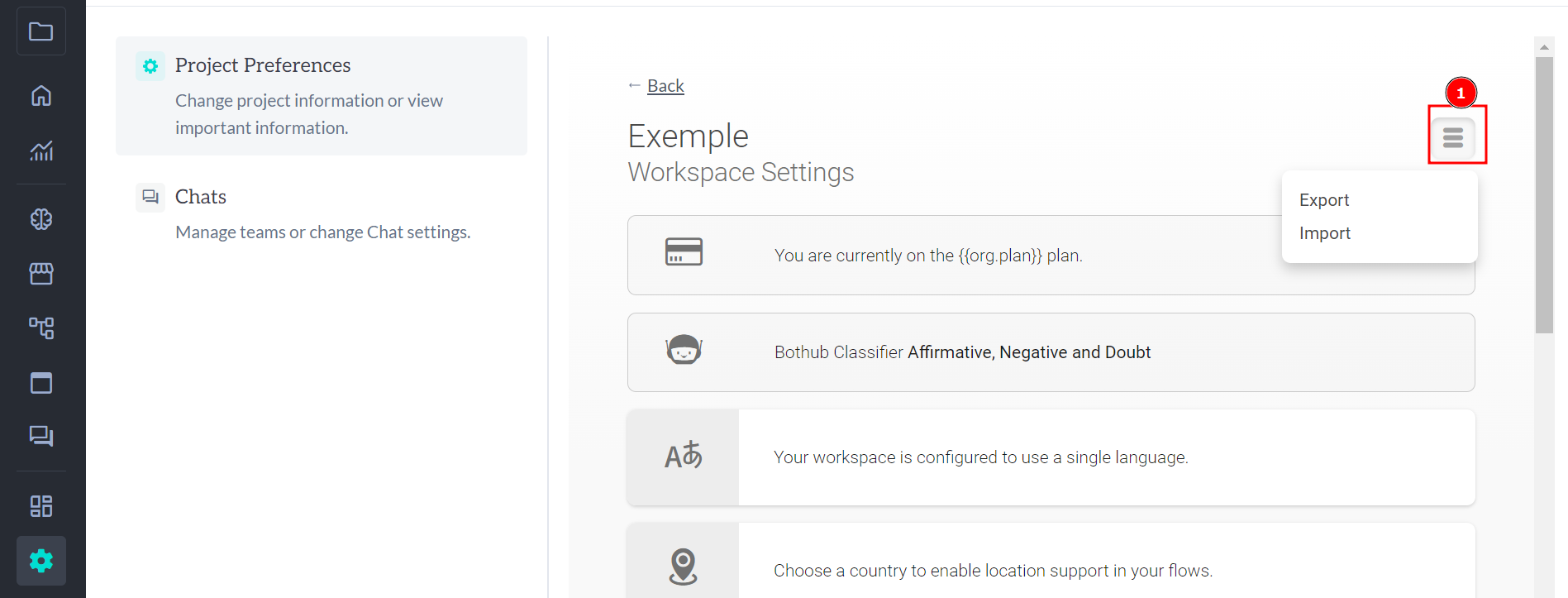Initial concepts
So, what we can do with the Platform?
Register and login
First Steps - Creating your project
Profile
Permission System
Project Dashboard
Platform Glossary
Changing the Platform Language
2-Factor Authentication
Invalid authentication code
Artificial Intelligence
Human Attendance
Weni Chats: Introduction to the Chats module
Weni Chats: Human Service Dashboard
Weni Chats: Attendance distribution rule
Weni Chats: Using active triggering of flows
Using groups to organize human attendance
Studio
Contacts and Messages
Groups
Messages
Triggers and Campaigns
Adding a trigger
Triggers Types
Tell a flow to ignore triggers and keywords
Campaign introduction
How to create a Campaign
Editing events
Creating contact from an external Webhook
Contact history
How to Download and Extract Archived Data
Integrations
Settings
How to connect and talk to the bot through the settings
Adding a Facebook Channel
Adding a Viber channel
How to Create an SMS Channel - For Developers (RapidPro)
Web Chat Channel
General API concepts and Integrations
How to create a channel on twitter
How to create a channel on Instagram
How to create an SMS channel
Adding ticket creation fields in Zendesk
Adding Discord as a channel
Creating a Slack Channel
Adding a Viber channel (RapidPro)
Creating a Microsoft Teams channel
Weni Integrations
How to Use the Applications Module
How to Create a Web Channel
Adding a Telegram channel
How to create a channel with WhatsApp Demo
Whatsapp: Weni Express Integration
Whatsapp: How to create Template Messages
WhatsApp Template Messages: Impediments and Configurations
Supported Media Sending - WhatsApp Cloud
Zendesk - Human Support
Ticketer: Ticketer on Rapid Pro
Whatsapp Business API
Active message dispatch on WhatsApp
Whatsapp business API pricing
How to Verify My Business
Whatsapp Bussiness API: WhatsApp message triggering limitation
Regaining Access to Business Manager
Webhook Configuration: Message Delivery Status
The Basics of Integrations
Native ChatGPT Integration
Native Integration - VTEX
General settings
General Project Settings
Weni Chats: Setting Up Human Attendance
Weni Chats: Human Service Management
Flows
Expressions and Variables Introduction
Variables Glossary
Expressions Glossary
Flows Creation
Flows introduction
Flow editor and tools
Action cards
Zero Shot Learning
Decision cards
Adding Media to the message
Call Webhook: Making requests to external services
Import and export flows
Using expressions to capture the user's location
Viewing reports on the platform
Route markers
WhatsApp Message Card
UX Writing
- All Categories
- Flows
- Import and export flows
Import and export flows
Updated
by Mallu
There are many reasons for wanting to import and export flows, from wanting to pass on a solution to a friend that we created on the platform to creating a template to disseminate within our community. Here, we'll explain a little more about how this process works.
Exporting
There are two ways to access the flow export page.
- First Path: Via flow editor
To access the export page through the flow editor, simply go to the options menu and click the "Export Definition" button.

Or also through the Flow module

You can learn a little more about the Flow Editor and its tools by clicking on the link.
- Second Path: Via general organization settings
To access the export page through the organization's general settings, just go to the options menu and click the "Export" button.

You can learn more about the Organization General Settings by clicking the link.
Once on the export page, it will display all the flows and campaigns of that organization, grouped by usage, meaning all flows in the same group interact with each other.

To export the flows you want, just select the ones you are interested in and then press the export button at the bottom of the page, it will generate a .json file that you can use in the next step, the import.
Import
To access the flow import page, simply go to the options menu and click the "Import" button in the organization's general settings.

After that, on the import page, select the .json file created on the export page and press the "Import" button.

That done, just wait a while and your flows will be properly imported into that organization.
